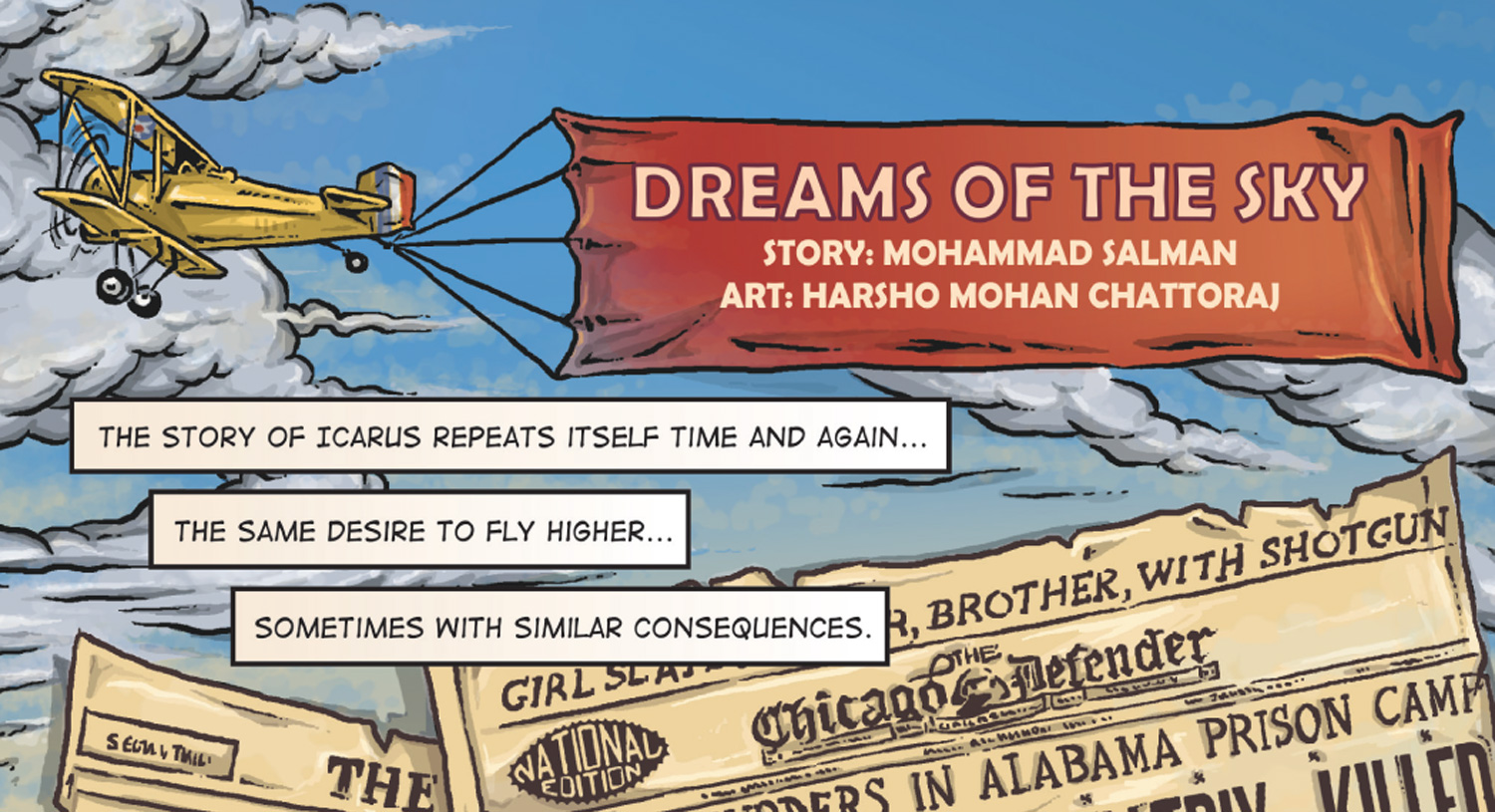
Vol 2 No 4 | Jan-Mar 2023
Dreams of the Sky
Story by Mohammad Salman | Art by Harsho Mohan Chattoraj
“Every No takes me closer to a Yes”
Bessie Coleman’s words resonate with determination and perseverance no matter what work she did. When her family moved to Chicago, necessity forced her to work as a manicurist so she enrolled at the Burnham School of Beauty Culture. Her work was exceptional, and in 1916 she won an award for the best and fastest manicurist in Black Chicago.
The race riots sweeping through Chicago at the time forced Bessie to travel to France to join a flight training school. She landed in Paris in 1921 at a time when Europe, discriminated against people of colour to a lesser extent than the US. Due to a recent accident in Paris, flying schools in the city were closed to women. Characteristically undeterred, she boarded a train to the north of France to train under the famous Caudron brothers. She would walk nine miles to and from school every day.
https://airandspace.si.edu/explore/collections/multimedia-gallery
Barnstorming
Also known as ‘flying circuses’, these events featured individual pilots or groups performing stunts and selling plane rides. They were the first notable form of civil aviation, whipping up enthusiasm for planes as a mode of both entertainment and transport. Originating in the 1900s, and gaining massive popularity in the 1920s, some of barnstorming’s early proponents included the iconic Wright brothers, as well as Glenn Curtiss, manufacturer of the JN 4 “Jenny” biplane that Bessie Coleman flew during her airshows.
Bessie’s Ride: The JN 4 “Jenny”
Originally produced for the US military in the First World War, the “Jenny” biplanes were at the centre of the barnstorming culture that took over the United States. Thousands of military surplus airplanes came into civilian use, sold to private owners at attractive prices. The skill and courage of aviators like Bessie Coleman made the planes a cultural icon, forever reminiscent of an age of fearless stunts and the ordinary public’s love of flying. In 1918, the plane was immortalised by a 24 cent postage stamp featuring an inverted Jenny, which became perhaps the most famous stamp in the world.
Aviatrixes of India
India has a rich history of women who aspired to fly. Not long after Bessie Coleman earned her pilot’s licence, Urmila K. Parikh became the first woman to get one from the Aero Club of India and Burma. Like Bessie, she paved the way for other young women.
In 1936, 21-year-old Sarla Thukral earned her wings and made a solo flight in a Gypsy Moth, going on to complete a thousand hours of flying. While the Second World War derailed her ambitions of a flying career, the legacy of early pioneers like herself continued after 1947. Usha Sundaram became the first woman to earn a pilot’s licence in post-Independence India. In 1950, with her husband as co-pilot, she made a London to Delhi flight via Paris, Baghdad and Karachi in a record 27 hours!
Over time, there have continued to be many significant ‘firsts’ for women pilots. Most recently, Captain Zoya Agarwal of Air India led an all-female crew over the world’s longest air route from San Francisco to Bengaluru, covering a record-breaking 16,000km, which included flying over the North Pole.
https://www.ndtv.com/video/features/news/down-memory-lane-first-woman-pilot-recounts-life-story-6231

